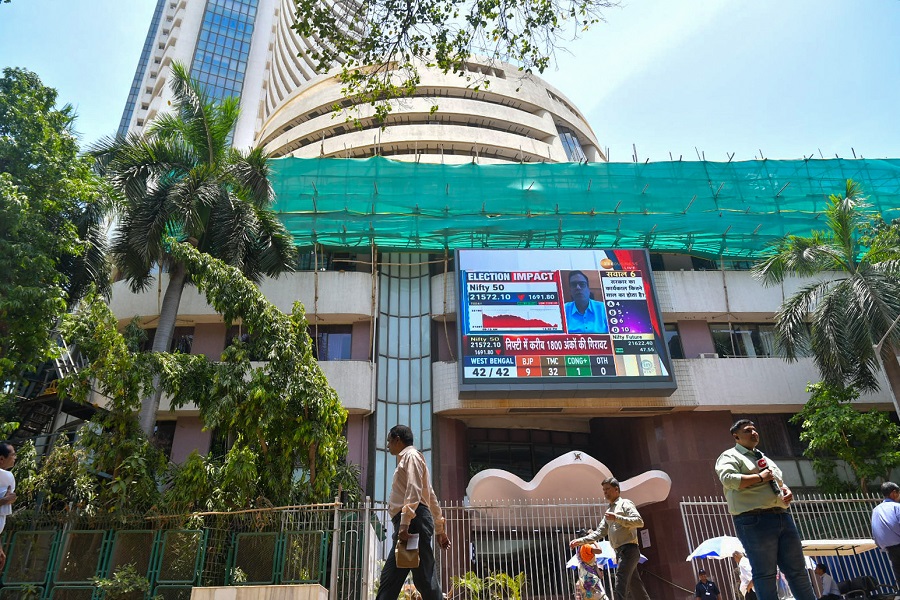Cottoncandy trading range for the day is 52670-53270 - Kedia Advisory

Gold
Gold prices dipped 0.14%, closing at Rs.88,602, driven by profit booking after hitting record highs. Market attention shifted towards the U.S. Federal Reserve's decision to hold rates steady at 4.25%-4.5%, while signaling slower economic growth and rising inflation — with expectations of two rate cuts in 2025. Meanwhile, geopolitical tensions escalated with the resumption of conflict in Israel after strikes on Gaza, adding uncertainty. China's gold market remained strong, backed by record ETF inflows in February and central bank purchases for the fourth consecutive month, pushing official reserves to 2,290 tonnes — 5.9% of total forex reserves. Jewelry demand in China is expected to recover alongside the improving economy. In India, high prices weighed on demand, leading to the widest discounts in 8 months — reaching $39/oz compared to $10-$21 last week. February gold imports are projected to plummet 85%, marking the lowest in 20 years. The World Gold Council forecasts 2025 consumption between 700-800 tonnes, down from 2024’s 802.8 tonnes — a 9-year peak — mainly due to weaker jewelry demand, though investment demand (ETFs, digital gold, coins, and bars) remains resilient. Technical outlook shows long liquidation, with open interest falling 5.37% to 13,263 contracts. Support is seen at Rs.88,355, with a break below testing Rs.88,105. On the upside, resistance sits at ?88,935, and a breakout may push prices to Rs.89,265.
Trading Ideas:
* Gold trading range for the day is 88105-89265.
* Gold eased as some profit-booking kicked in after prices scaled a record peak.
* The Fed keep the funds rate unchanged at 4.25%-4.5%, but signaled expectations of slower economic growth
* Conflict in the Israel has resumed after attacks on the Gaza Strip.
Silver
Silver prices declined 1.33%, closing at Rs.99,924, driven by profit booking ahead of key central bank decisions. The Bank of Japan maintained its 0.50% interest rate, aligning with market forecasts and citing concerns over potential fallout from U.S. tariff policies. Meanwhile, Euro Area inflation cooled to 2.3% in February 2025, slightly below the initial 2.4% estimate, easing from January’s 2.5%. Comex silver inventories hit a record 403.2 million ounces by February 27, reflecting rising stockpiles amid volatile price action. Hecla Mining, the largest U.S. silver producer, reported a 13% rise in 2024 silver output, totaling 16.2 million ounces — its second-highest production in 134 years. Despite this, the silver market is set to experience a supply deficit for the fifth consecutive year in 2025, though the gap is projected to shrink 19% to 149 million ounces — still a historically significant shortfall. Global silver demand is forecast to hold steady at 1.2 billion ounces, driven by 3% growth in industrial fabrication, especially from green economy sectors. Silver physical investment is also expected to rise 3%, fueled by stronger demand from Europe and North America. However, jewelry demand is set to drop 6%, largely due to India’s price-driven pullback. Technically, silver remains in long liquidation, with open interest dropping 3.58% to 22,417 contracts. Support is seen at Rs.99,280, with a break below potentially testing Rs.98,640. Resistance stands at Rs.101,015, and a push beyond could see prices test Rs.102,110.
Trading Ideas:
* Silver trading range for the day is 98640-102110.
* Silver dropped on profit booking ahead of a major central bank’s monetary policy meeting conclusion.
* Data showed that the series of tariff threats by President Trump drove households and businesses to reconsider spending patterns.
* The Bank of Japan kept its main interest rate at 0.50%, in line with market expectations.
Crude Oil
Crude oil prices edged up 0.24%, settling at Rs.5822, driven by hopes for progress in Russia-Ukraine peace talks, which could ease supply constraints. However, gains were capped by escalating tensions in the Middle East and optimism surrounding China’s economic stimulus efforts, which continue to support demand expectations. Goldman Sachs revised its December 2025 forecast for Brent to $71 per barrel (down $5) and WTI to $67, citing slower demand growth and higher OPEC+ production. Adding to supply pressure, OPEC and its allies plan to raise output next month, while Putin's partial agreement to halt strikes on energy infrastructure hints at potential re-entry of Russian oil into global markets. U.S. crude inventories rose significantly for the second straight week, increasing by 4.593 million barrels (API data) and 1.745 million barrels (EIA report), exceeding expectations. Meanwhile, Cushing storage fell by 1.009 million barrels, and gasoline stocks dropped less than forecast, while distillates (diesel, heating oil) fell 2.812 million barrels, beating predictions. The International Energy Agency (IEA) warned of a 600,000 barrels/day supply surplus for 2025, potentially rising to 1 million barrels/day if OPEC+ overproduction continues. Demand growth was revised down by 70,000 barrels/day, primarily relying on Asia, particularly China's petrochemical sector. Technically, crude oil remains under fresh buying, with open interest surging 12.09% to 5656 contracts. Support is at Rs.5762, with a dip below likely testing Rs.5702. Resistance stands at Rs.5864, and a breakout could drive prices toward Rs.5906.
Trading Ideas:
* Crudeoil trading range for the day is 5702-5906.
* Crude oil gains amid prospects that progress on Russia-Ukraine peace talks could lead to increased supply.
* Crude oil inventories in the US rose by 1.745 million barrels, data from the EIA showed.
* Crude stocks at the Cushing, Oklahoma, delivery hub fell by 1.009 million barrels, after a 1.128 million decrease.
Natural Gas
Natural gas prices rose 1.94%, settling at Rs.362.3, driven by record gas flows to LNG export plants, a drop in daily output, and forecasts for cooler weather boosting demand next week. Gas inventories are now 12% below normal for this time of year, largely due to extreme cold in January and February, which forced record storage withdrawals. LSEG reported U.S. gas output in the Lower 48 states rose to 105.8 billion cubic feet per day (bcfd) in March, up from a record 105.1 bcfd in February. However, daily output dipped to a three-week low of 104.1 bcfd on Tuesday, reflecting temporary production setbacks. Weather forecasts indicate mostly normal temperatures through April 2, but demand is expected to rise from 107.4 bcfd this week to 110.5 bcfd next week — a higher projection than earlier estimates. U.S. utilities withdrew 62 billion cubic feet (bcf) of gas from storage in the week ending March 7, 2025, surpassing the expected 50 bcf draw. Storage now stands at 1,698 bcf, with sharp declines in the East (-33 bcf) and Midwest (-26 bcf). The EIA projects record-high U.S. gas output and demand in 2025, with dry gas production forecast at 104.6 bcfd and LNG exports reaching 14.0 bcfd. Technically, the market is in short covering mode, with open interest down -8.72% to 11,689 contracts. Support stands at Rs.354.4, with a potential drop to Rs.346.6. Resistance is at Rs.368.2, and a break above could push prices toward Rs.374.2.
Trading Ideas:
* Naturalgas trading range for the day is 346.6-374.2.
* Natural gas edged up on record gas flows to LNG export plants, a drop in daily output.
* Gas stockpiles were currently around 12% below normal levels for this time of year.
* Average gas output in the Lower 48 U.S. states had risen to 105.8 billion cubic feet per day (bcfd) so far in March
Copper
Copper prices edged 0.39% higher, settling at Rs.910.2, driven by market anxieties over potential U.S. tariffs on copper imports. President Donald Trump initiated a probe into new tariff measures, pushing Comex copper premiums to a record $1,192 per ton over LME contracts. LME on-warrant copper stocks dropped to 136,300 tons, the lowest since mid-June, with 11,675 tons newly canceled, indicating more copper is earmarked for delivery. Canceled warrants now account for over 40% of total stocks, signaling tight supply in the near term. Meanwhile, China’s copper stocks surged toward the 270,000-ton mark — three times the level from early this year — driven by rising domestic smelting capacity, curbing import needs. Reflecting this, China's unwrought copper imports declined 7.2% year-on-year to 837,000 tons in the first two months of 2025, while copper concentrate imports rose 1.3% to 4.71 million tons, showcasing a shift toward raw material imports for local processing. Chile, the world’s largest copper producer, reported a 2.1% year-on-year output drop in January to 426,889 tons, adding to supply-side worries. The global refined copper market showed a 22,000-ton deficit in December, narrowing from November’s 124,000-ton shortfall, according to the International Copper Study Group (ICSG). Technically, copper remains in short covering mode, with open interest falling -4.57% to 4,591 contracts. Support is at Rs.907.7, with a break lower testing Rs.905.1. Resistance sits at Rs.911.9, and a push above could lift prices toward Rs.913.5.
Trading Ideas:
* Copper trading range for the day is 905.1-913.5.
* Copper prices held firm with markets watching out for potential U.S. tariffs on copper.
* U.S. President Donald Trump had ordered a probe into possible new tariffs on copper.
* The premium of Comex copper over the LME contract, was at a record high of $1,192 a ton.
Zinc
Zinc prices dipped -0.61%, closing at Rs.275.95, driven by rising production from China's smelters. However, losses were capped after Nyrstar announced a 25% production cut at its Hobart zinc smelter in Australia — a facility with an annual capacity of 260,000 metric tons — citing financial struggles due to rising costs and weaker raw material markets. LME on-warrant stocks dropped to 94,700 tons, the lowest since November 2023, following 42,575 tons of fresh cancellations, indicating tight supplies. Global zinc production continued its decline for a third consecutive year in 2024, with the International Lead and Zinc Study Group (ILZSG) reporting a 62,000-ton deficit — a sharp swing from 2023's 310,000-ton surplus. Lower mined output from Canada, China, South Africa, and Peru contributed to the shortfall, alongside a 2.6% drop in refined metal production, mainly from China, Japan, and South Korea. In China, refined zinc output fell 8% MoM and 4% YoY in February 2025, driven by production halts during the Lunar New Year and maintenance in key regions like Hunan, Gansu, and Yunnan. However, March 2025 production is expected to surge 13% MoM and 4% YoY, aided by capacity expansions in Shaanxi and Qinghai and post-holiday recovery. Technically, zinc is in long liquidation, with open interest falling -5.91% to 1,752 contracts. Support is at Rs.274.3, with a potential dip to Rs.272.6. Resistance stands at Rs.278.7, and a break above could push prices toward Rs.281.4.
Trading Ideas:
* Zinc trading range for the day is 272.6-281.4.
* Zinc dropped as China’s zinc smelters are more willing to increase production.
* However downside seen limited after Nyrstar announced 25% production cuts
* Zinc inventories in warehouses monitored by the Shanghai Futures Exchange rose 0.9% from last Friday.
Aluminium
Aluminium prices edged down -0.3%, closing at Rs.262.45, weighed by improved raw material availability. Major alumina producers in Guinea, Australia, and China expanded capacity to recover from last year’s disruptions, driving alumina prices to one-year lows and boosting smelting activity. However, while raw material supplies improved, finished aluminium production faces limitations. China, the world’s top producer, hit a record 44 million tons in 2024, but output must slow in 2025 to stay within Beijing's 45 million-ton cap — a policy aimed at curbing excess supply and supporting carbon emission targets. Trade data reflects this shift, showing muted Chinese aluminium exports after the government scrapped tax rebates, pushing global benchmark prices higher as producers prioritized domestic sales. In February 2025, China’s aluminium production rose 0.4% YoY but fell 95,000 metric tons MoM, as smelters resumed operations from earlier curtailments and restarted projects amid improved profitability. JP Morgan forecasts a significant global aluminium market deficit exceeding 600,000 metric tons by 2025, driven by slowing supply growth, aligning with China's production struggles. Meanwhile, global primary aluminium output climbed 2.7% YoY in January to 6.252 million tonnes, per International Aluminium Institute (IAI) data. Technically, aluminium is in long liquidation, with open interest dropping -11.65% to 2,382 contracts. Support is seen at Rs.261.7, with a potential dip to Rs.260.9. Resistance is at Rs.263.8, and a breakout could push prices to Rs.265.1.
Trading Ideas:
* Aluminium trading range for the day is 260.9-265.1.
* Aluminium prices dropped amid the improved availability for raw materials.
* Major alumina producers in Guinea, Australia, and China added new capacity to recover from series of disruptions last year.
* China produced 44 million tons of aluminum in 2024, the most on record.
Cottoncandy
Cottoncandy prices edged up 0.26% to Rs.53,040, supported by supply concerns after the Cotton Association of India (CAI) cut its 2024-25 crop estimate by 2% to 295.30 lakh bales from the earlier 301.75 lakh bales forecast, driven by lower yields in central India. A 10% decline in planting area contributed to the reduced output, a notable drop from 327.45 lakh bales last season. The government’s second advance estimate also trimmed production to 294.25 lakh bales, down 1.5% from earlier predictions. Gujarat and Maharashtra are expected to see reductions of 4 lakh bales and 3 lakh bales respectively, while Odisha may gain 0.55 lakh bales. Cotton imports are forecasted to double to 32 lakh bales, with 22 lakh bales already imported by February-end. Domestic consumption remains steady at 315 lakh bales, though exports are projected to fall 40% to 17 lakh bales from 28.36 lakh bales last year. Closing stocks are expected to shrink to 23.49 lakh bales, down from 30.19 lakh bales in 2024. Globally, Brazil’s production is set to rise 1.6% to 3.7616 million tons, with planting area expanding 4.8%, supporting strong supply potential. Meanwhile, the U.S. balance sheet shows minimal changes, with domestic mill use reduced by 100,000 bales, pushing ending stocks higher. Technically, Cottoncandy is in short covering as open interest dropped -12.12% to 174 contracts while prices rose by Rs.140. Support is at Rs.52,850, with further downside to Rs.52,670, while resistance is seen at Rs.53,150, and a breakout could push prices to Rs.53,270.
Trading Ideas:
* Cottoncandy trading range for the day is 52670-53270.
* Cotton gains as CAI has further reduced its 2024-25 crop estimate by 2 per cent to 295.30 lakh bales
* However downside seen limited due to a substantial increase in supply and limited mill buying.
* Mills are well-stocked and are not facing immediate purchasing requirements.
* In Rajkot, a major spot market, the price ended at 25554.25 Rupees dropped by -0.21 percent.
Turmeric
Turmeric prices edged up 0.08% to Rs.12,748, supported by lower-than-expected arrivals and strong buying interest driven by robust export demand. Exports surged in 2024, reaching a four-year high, surpassing 2020’s volume of 1.75 lakh tonnes. From April to December 2024, turmeric exports jumped 13% to 1,36,921 tonnes, compared to 1,21,170 tonnes during the same period in 2023. December alone saw a 46.94% rise, with 15,319 tonnes exported, up from 10,425 tonnes in December 2023, highlighting sustained global demand. On the production front, challenges loom. New crop yields are estimated to be 10-15% lower, especially in Nanded, where small rhizomes and crop rot have impacted output. Despite a 10% increase in acreage to 3.3 lakh hectares (up from 3 lakh hectares last season), untimely rains are expected to limit productivity gains. Last year’s production stood at 10.75 lakh tonnes, but this year’s output may remain flat or fluctuate by 3-5% due to weather-induced yield losses. Imports also showed a notable shift. While overall imports between April-December 2024 soared by 84.35% to 19,644 tonnes (from 10,655 tonnes in 2023), December imports dropped sharply by 44.69% year-on-year, signaling a preference for domestic supply. Technically, turmeric remains under fresh buying, with open interest rising 1.28% to 12,240 contracts. Support is at Rs.12,578, and a dip below may test Rs.12,406. Resistance stands at Rs.12,944, with a push higher possibly testing Rs.13,138.
Trading Ideas:
* Turmeric trading range for the day is 12406-13138.
* Turmeric gained as lower-than-expected arrivals restricted supplies, leading to strong buying interest.
* Exports continued to pick up in the second half of 2024, with shipments reaching a four-year high.
* New crop yields are expected to be 10-15% lower this year, with the Nanded region particularly affected.
* In Nizamabad, a major spot market, the price ended at 12766.25 Rupees gained by 0.65 percent.
Jeera
Jeera prices declined 0.46%, settling at Rs.21,450, driven by weak demand and ample carry-forward stocks. Farmers hold around 20 lakh bags, with only 3-4 lakh bags expected to be traded by season-end, leaving 16 lakh bags in carryover stock. This surplus, alongside steady production, has kept prices under pressure. The Spices Board reports 2023-24 production at 8.6 lakh tonnes from 11.87 lakh hectares, significantly up from 5.77 lakh tonnes on 9.37 lakh hectares last year — reflecting better sowing and crop conditions. Despite the dip, domestic demand and export activity, particularly from Gulf countries post-Ramadan, provide underlying support. Supply remains tight in the near term due to limited arrivals from Rajasthan, and Gujarat’s new crop is delayed by a month due to unfavorable weather. On the export front, India remains the cheapest global supplier, with prices around $3,050 per tonne, $200-$250 lower than Chinese cumin. This price advantage has drawn global buyers, including China, driving exports 70.72% higher to 1,65,084 tonnes from April to December 2024, compared to 96,701 tonnes last year. December exports surged 47.77% year-on-year to 18,078 tonnes, highlighting robust international demand. Technically, jeera remains in fresh selling mode, with open interest rising 3.4% to 3,285 contracts — indicating bearish sentiment. Support is at Rs.21,320, and a break lower could test Rs.21,180. On the upside, resistance is at Rs.21,590, with a move above possibly testing Rs.21,720.
Trading Ideas:
* Jeera trading range for the day is 21180-21720.
* Jeera dropped as demand is low and the current export business is being met from the available stock.
* Supply trends remain crucial, as near-term supplies remain tight due to limited arrivals from Rajasthan.
* The start of the new crop of cumin in Gujarat has been delayed by about a month.
* In Unjha, a major spot market, the price ended at 21402.15 Rupees gained by 0.01 percent.
Views express by all participants are for information & academic purpose only. Kindly read disclaimer before referring below views





















